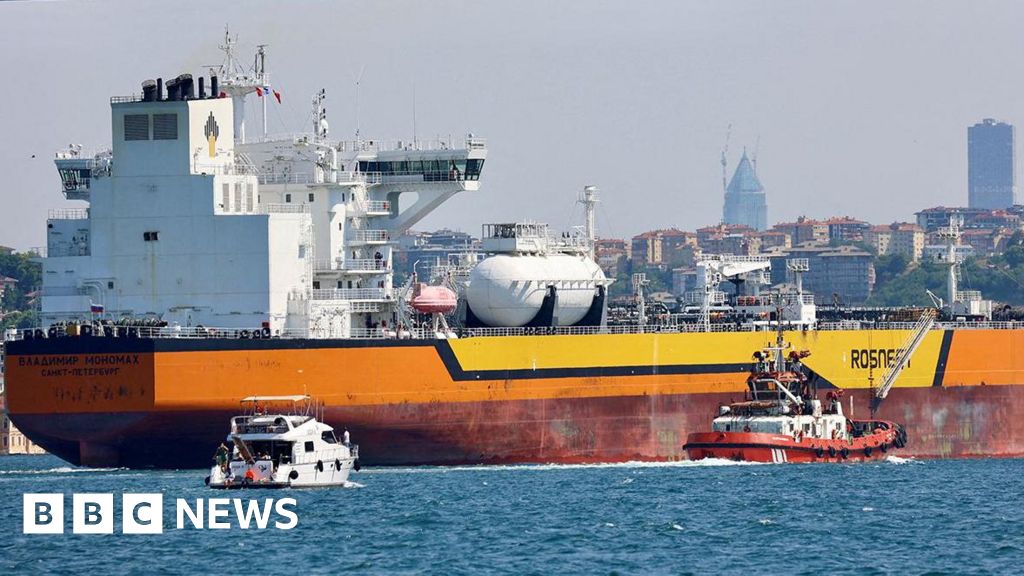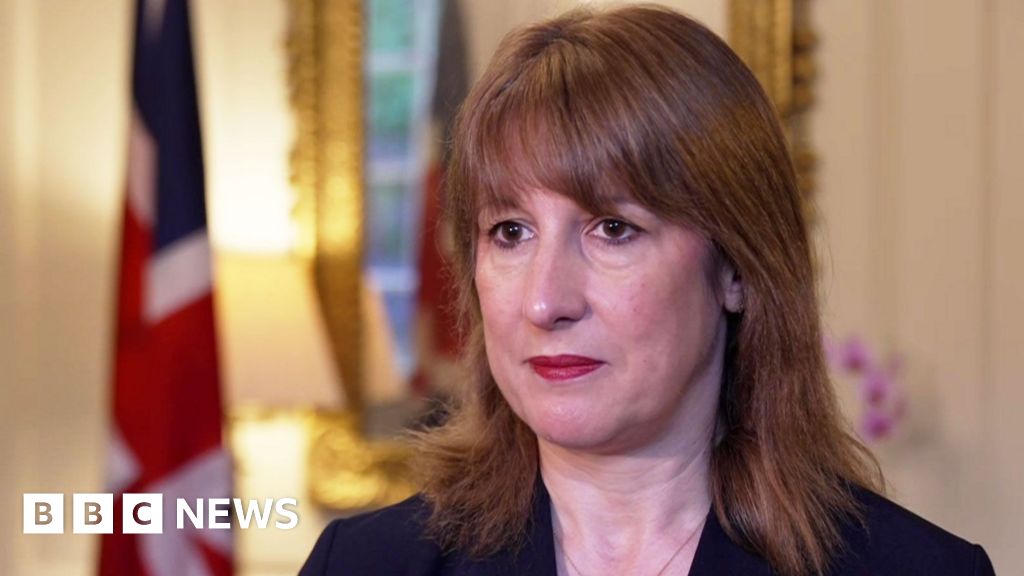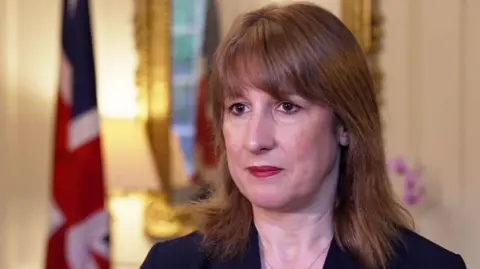Business
UK sanctions Russia’s oil giants over Ukraine war

Britain is targeting Russia’s largest oil companies and the country’s “shadow fleet” of oil tankers in a bid to cut off Vladimir Putin’s ability to fund the war in Ukraine.
The UK government is also pursuing a major Indian oil refinery and four Chinese oil terminals in a package of 90 new sanctions.
Chancellor Rachel Reeves said the move was expected to have a significant impact on Russia’s economy and its ability to sustain military operations in Ukraine.
“We are sending a clear signal: Russian oil is off the market,” she said ahead of a meeting in Washington DC with global counterparts to discuss Russian sanctions.
Reeves said the government was “significantly stepping up the pressure on Russia and Vladimir Putin’s war effort.”
Russia’s two largest oil companies – Lukoil and Rosneft – will be hit with sanctions, Reeves said on the sidelines of the International Monetary Fund’s (IMF) annual meeting.
“At the same time, we are ramping up pressure on companies in third countries, including India and China, that continue to facilitate getting Russian oil onto global markets,” she said.
“There is no place for Russian oil on global markets and we will take whatever actions are necessary to destroy the capability of the Russian government to continue this illegal war in Ukraine.”
The government was also sanctioning 44 tankers that operate in Russia’s “shadow fleet” transporting oil around the world, Reeves said in a joint statement with the Foreign Secretary Yvette Cooper.
The two Russian oil firms export 3.1 million barrels of oil per day. Rosneft is responsible for nearly half of all Russian oil production, which makes up 6% of the global output, according to the government.
Also on the sanction list is India’s Nayara Energy Limited, which the government said imported 100 million barrels of Russian crude oil worth more than $5bn (£3.75bn) in 2024 alone.
Cooper said: “Today’s action is another step towards a just and lasting peace in Ukraine, and towards a more secure United Kingdom.”
The announcement comes as the G7, a grouping of some of the world’s most advanced economies, prepares to consider a plan to effectively seize hundreds of billions from the proceeds of Russian investments, frozen since the invasion of Ukraine.
A vast bulk of Russia’s assets are held as cash at the European Central Bank, after its underlying bond investments matured.
The European Union (EU), where the bulk of funds are held, had been reluctant to pursue the wider plan, but appears to be developing a way round legal concerns. It will be considered at an EU summit next week.
Ukraine has significant funding needs as the war continues, both in arms and reconstruction.
Earlier this year, the UK joined the US in directly sanctioning energy companies Gazprom Neft and Surgutneftegas.
At the time the then Foreign Secretary, David Lammy, had said it would “drain Russia’s war chest – and every ruble we take from Putin’s hands helps save Ukrainian lives”.
Business
Kendra Scott expands into Western wear with new boot collection

Sign on facade at Kendra Scott retail store on Santana Row in the Silicon Valley, San Jose, California, December 14, 2019.
Smith Collection | Archive Photos | Getty Images
Kendra Scott, a jewelry brand best known for its single-pendant necklaces, is becoming the latest company to join the Western wear trend.
The company on Wednesday announced its debut boots collection in an expansion outside of the accessories market. The brand will offer three styles, available in men’s and women’s, as part of the Yellow Rose by Kendra Scott line focused on Western style.
“A lot of folks don’t know, but in the other half of my life, I take my heels off in the boardroom, and I throw my boots on and head to my ranch,” founder Kendra Scott told CNBC.
Scott, who lives in Texas, said she grew up incorporating Western wear from denim to cowboy boots into her everyday style, in what she calls a “beautiful, timeless, classic look.” Slowly, Scott said she saw the trend take hold across the globe.
“I’m sitting here going, well, this is my life everyday. This is authentically who I am and what I do,” Scott said. “I also noticed that there were a lot of Western brands out there that put cowboy first, and then they later think about the girl … so I was really excited to create a brand that put cowgirl front and center, but make it more modern.”
Kendra Scott’s expansion into Western wear rides a larger wave of companies leaning into the style. The fast-growing market for cowboy boots is projected to reach $538.6 million by 2035, according to Future Market Insights.
Other companies are taking notice. Retailers like Gap and Levi’s are marketing and innovating more denim products amid what’s become a “jeans war.” Wrangler is an exclusively Western wear brand that has leveraged the trend, and parts of American pop culture like the hit TV show “Yellowstone” and celebrities like Beyoncé are embracing the cowgirl aesthetic.
Of course, more Western wear options for consumers means tougher competition for Kendra Scott as it enters the space.
Branching out
Scott set out to create Yellow Rose in 2023. The in-house brand eventually became separate brick-and-mortar stores that incorporate Western style into its jewelry designs. Scott said the company quickly saw customer excitement about the unique style, but it felt like the tip of the iceberg of the brand’s potential.
Over the course of two years, the company tested modern Western apparel that was specifically designed for women, Scott said. The boots, she said, tie in the custom shapes that the jewelry brand is known for and include stitching and embroidery that give them a more “modern twist.”
Scott said the collection is a “labor of love” with a specially shaped toe, a unique combination of leather and suede, multiple color choices and options for both men and women.
Yellow Rose by Kendra Scott’s debut boots collection
Source: Kendra Scott
And the debut boot collection is just the first step toward building out a larger wardrobe, Scott said.
“We’ve been at it for almost 24 years and really put our stake in the ground as this premier jewelry designing brand,” Scott said. “We’ve built trust and connection with our customer over two decades now, and that allows a brand like mine to be able to now think about [more].”
Yellow Rose, named after Scott’s ranch and the Texas flower, is opening its fourth location – and the first outside of Texas – in the fourth quarter of 2025 in Nashville, Tennessee.
The boots launch comes after the company branched out into eyewear at the beginning of this year, entering into a licensing agreement with Marchon Eyewear.
Scott said the step into Western apparel is a significant next chapter for the brand.
“It’s exciting because I think we’re at a really amazing place at Kendra Scott where this next 20 years is really going to be something that is kind of like literally, ‘hold on to your hat,’ because we’re on this launching pad that we’ve really been able to build that trust,” Scott said. “When we launch a new category, we make sure that we’re filling a void in the market and that we’re doing it with our own unique fingerprint.”
Business
Rachel Reeves says she is looking at tax rises ahead of Budget

Paul SeddonPolitical reporter ,
Joshua NevettPolitical reporter and
Henry ZeffmanChief political correspondent
 BBC
BBCRachel Reeves has said she is looking at “further measures on tax” ahead of next month’s Budget, in the clearest sign yet that tax hikes are on the way.
The chancellor also said she was considering further measures on public spending, in a bid to put the UK’s finances on a firmer footing.
Speaking to broadcasters ahead of an international finance summit in the US, she added that she would “continue to prioritise economic and fiscal stability”.
The chancellor is widely expected to raise taxes at the Budget on 26 November, after gloomy economic forecasts and a series of U-turns on welfare cuts made it harder for her to meet her own tax and spending rules.
Reeves announced tax rises worth £40bn a year at her first Budget last November, including hikes to payroll taxes paid by employers, and insisted she would not have to repeat the move in subsequent years.
But the chancellor is now facing the prospect of another repair job to the public finances, after rises to borrowing costs since then and expected downgrades to the productivity of the UK economy.
Some analysts have estimated Reeves will have to raise taxes or cut spending by around £20bn to meet her “non negotiable” financial rules.
These rules mean her plans must be projected to get government debt falling as a share of national income by 2029-30, and day-to-day government costs must be paid for by tax income rather than borrowing.
Speaking to broadcasters in Washington DC ahead of the the International Monetary Fund (IMF) annual meeting, the chancellor said: “I’ve always been very clear that we will continue to prioritise economic and fiscal stability in the UK.”
Asked whether she would have to raise taxes, she replied: “As we get the forecast, and as we develop our plans, of course we are looking at further measures on tax and spending, to make sure that the public finances always add up.”
‘Severe’ Brexit impact
In an earlier interview with Sky News, Reeves said austerity policies and former Prime Minister Liz Truss’s mini-budget had damaged the UK economy.
She also sought to blame Brexit, adding that the economic effects of the UK’s exit from the EU had been “severe and long-lasting”.
She cited the government’s attempts to strike food regulation and youth visa deals with the EU as moves that were “undoing some of that damage”.
Reeves and her Treasury ministers have so far been tight-lipped on which taxes could potentially go up.
The chancellor has not ruled out continuing to freeze income tax thresholds beyond the 2028 date fixed by the last government, allowing more people to be dragged into higher bands as their wages rise over time.
Reports have also suggested she is looking at property taxes, including making more landlords pay National Insurance on rental income.
There has also been speculation that betting companies could face higher taxes, with the chancellor recently saying she thought “there is a case for gambling firms paying more”.
In her speech to Labour conference last month, Reeves pledged to keep “taxes, inflation and interest rates as low as possible” – but has reduced her options by promising at the last election not to hike the biggest revenue-raising taxes.
Labour promised in its 2024 manifesto not to raise income tax rates, VAT, a sales tax, and corporation tax, which is paid by companies on their profits.
The party also promised not to raise National Insurance – prompting a row last autumn when it announced the rise in the contributions paid by employers.
‘Tax doom loop’
Reeves had been widely expected to hike taxes at the Budget, but her comments in Washington were also notable for explicitly raising the prospect that tax rises could be accompanied by cuts to public spending.
However, many Labour MPs believe that spending cuts in most areas would be politically unviable after the failed attempts at welfare cuts earlier this year, with a welfare overhaul put on ice pending a ministerial review.
The day-to-day budgets of government departments were only recently set for the next three years at June’s spending review, although the government could promise to cut spending in four or five years.
The Conservatives opened up a clear dividing line on the issue at their conference last week, pledging to slash public spending by £47bn a year if they win the next election through cuts to welfare, the civil service and foreign aid.
On Monday, the International Monetary Fund (IMF) said the UK was set to be the second-fastest-growing of the world’s most advanced economies this year.
But the IMF also predicted the UK will face the highest rate of inflation among G7 nations both this year and next, driven by rising energy and utility bills.
Shadow chancellor Sir Mel Stride said the government needed to get a grip on public spending, rather than raise taxes again.
He said: “Be in no doubt, this tax doom loop is down to the Chancellor’s economic mismanagement.
“Under Rachel Reeves we have seen inflation double, debt balloon, borrowing costs at a 27-year high, and taxes up – with more pain on the way in the autumn.”

Business
Most U.S. consumers expect higher holiday prices and a weaker economy, survey finds

As the peak holiday shopping season approaches, most U.S. consumers have a downbeat outlook on the economy, according to an annual Deloitte survey published Wednesday.
Most consumers surveyed — 57% — said they expect the economy to weaken in the year ahead, the consulting firm found in a poll of roughly 4,000 respondents. That compares with 30% who expected a weaker economy ahead of the year-ago holiday season and 54% in 2008, one of the years of the Great Recession.
It marks the most negative economic outlook since Deloitte began tracking that in 1997.
Seventy-seven percent of people surveyed said they expect higher prices on holiday items, up from 69% last year, according to Deloitte. It’s the first holiday season since President Donald Trump‘s latest wave of tariff hikes on many imports.
“We’ve been talking about the resilient consumer for a while now, that despite all these pressures, the U.S. consumer continues to spend and we keep seeing growth and spending for retail,” said Brian McCarthy, retail strategy leader for Deloitte. “This outlook is starting to suggest that we’re getting towards the end of that resilience.”
Consumers’ pessimistic mindset has factored into their spending plans during the holiday season. They plan to spend an average of $1,595, 10% less than the $1,778 they planned to spend in the year-ago period, as they brace for higher prices, according to the Deloitte survey.
The lower anticipated spending cuts across all household income groups and nearly all generations, Deloitte found. Yet it was especially significant among younger shoppers.
Gen Z consumers, which in the survey were between ages 18 and 28, said they plan to spend an average of 34% less this holiday season than a year ago. Millennials, respondents between age 29 and 44 in the poll, said they expect to spend an average of 13% less this holiday season.
That compares with Gen X, which plans to spend an average of 3% more, and baby boomers, who expect to spend an average of 6% less.
For Gen Z shoppers, the tighter holiday budget likely comes from feeling more uncertain and unstable early in their careers, McCarthy said.
“They’re thinking about income and the job market and the concerns about the economy is going to throw a lot more pressure on them because they haven’t yet had time to sort of build up their savings or plan for less rosy economic environments,” he said.
Mike Daher, U.S. consumer industry leader for Deloitte, said the age group is also “exposed to a lot of inflationary pressures around housing costs,” along with higher prices for everyday items like groceries.
For retailers and brands, the findings add a note of caution to the most crucial sales period of the year. Other holiday forecasts have also found households expect to spend less, while still reflecting consumers’ appetite for decorating and giving gifts during the festive season.
Holiday spending across stores and online is expected to rise 4% year over year, according to consulting firm Bain & Co., a drop from the 10-year average of 5.2% growth. A separate Adobe Analytics report found online holiday spending in the U.S. is expected to grow 5.3% year over year, but that would be slower than the year-ago increase of 8.7% year over year.
Like Deloitte’s poll, consulting firm PwC’s survey indicated a holiday pullback among Gen Z consumers, who said they planned to spend 23% less than during the year-ago period. Overall, consumers said they expect to spend about 5% less – or an average total of $1,552 – on holiday gifts, travel and entertainment compared with the year-ago season, according to the PwC survey.
The National Retail Federation, the major industry trade group, plans to share its holiday forecast in early November.
Though holiday outlooks have varied, one of the dominant themes of this holiday season will be value-seeking, Deloitte’s McCarthy said. Even in the past several months, the firm has found a notable uptick in the number of U.S. consumers who have reported seeking deals. Across income groups, Deloitte’s survey indicated that 7 in 10 respondents are engaging in three or more deal-seeking behaviors, such as purchasing store brands or alternative ingredients, cooking more meals at home and buying used cars.
As consumers watch their budgets, they told Deloitte they will cut back on holiday-related extras. On average, consumers said they plan to spend $397 on nongift holiday expenses, such as hosting, clothing and decor, a 22% drop from $507 a year ago.
For gifts, however, the cut wasn’t as deep. On average, survey respondents said they plan to buy eight gifts compared with nine in the year-ago period and spend 6% less on average, a drop to $505 compared with $536 in the prior-year holiday season.
-

 Business1 week ago
Business1 week agoTata Capital IPO: Rs 15,512 crore IPO fully subscribed; stock market debut on Oct 13 – The Times of India
-

 Tech6 days ago
Tech6 days agoApple Took Down ICE-Tracking Apps. Their Developers Aren’t Giving Up
-

 Tech1 week ago
Tech1 week agoJony Ive Says He Wants His OpenAI Devices to ‘Make Us Happy’
-

 Tech5 days ago
Tech5 days agoMen Are Betting on WNBA Players’ Menstrual Cycles
-

 Entertainment1 week ago
Entertainment1 week agoHilaria Badlwin admits she takes parenting tips from step-daughter Ireland Baldwin
-

 Sports1 week ago
Sports1 week agoBills benched WR Coleman for disciplinary reasons
-

 Sports1 week ago
Sports1 week agoSouth Africa begin World Test Championship title defence with target on their back – SUCH TV
-

 Sports1 week ago
Sports1 week agoCubs vs. Brewers (Oct 6, 2025) Live Score – ESPN







